2022 Toyota GR 86 First Drive: Smile Machine
The idea of some attainable, low-risk fun sounds pretty good right now. Toyota probably didn't expect to be launching its 2022 GR 86 coupe in the midst of a global pandemic, the world rippling with geopolitical instability, and the markets convulsing like a seasick stomach, but suddenly a fairly cheap, punchy little two-door to distract us from the woes of the world feels just what the doctor ordered.
Final pricing for the 2022 GR 86 won't be confirmed until a little closer to the coupe's arrival in US dealerships in November. Still, Toyota says to expect it to land "comfortably below" the $30k mark, so the uptick compared to the outgoing 86 – formerly known as the FR-S – looks set to be small.
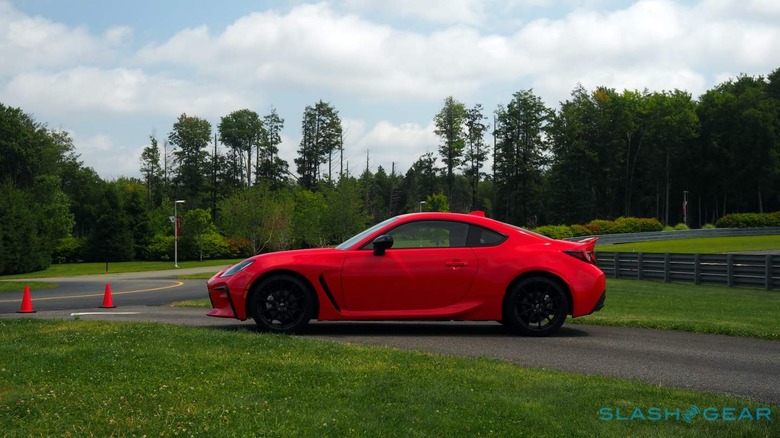
The recipe hasn't changed much, and as always it's just as much about what's left out as what goes in. Most notable is the new engine, now a 2.4-liter boxer 4-cylinder with 228 horsepower at 7,000 rpm, and 184 lb-ft of torque at 3,700 rpm. That's a neat uptick of 23 hp and 28 lb-ft compared to the old 2.0-liter engine.
Also present and correct is the choice of a manual or an automatic transmission. The purist's pick, of course, is the 6-speed stick, now promising a better feel for diagonal shifts – like 2nd to 3rd, or 4th to 5th – and an improved 4th shift feel. Toyota boosted the internal strength, too, and added low viscosity oil and new bearings to cut how much effort it takes at low temperatures.
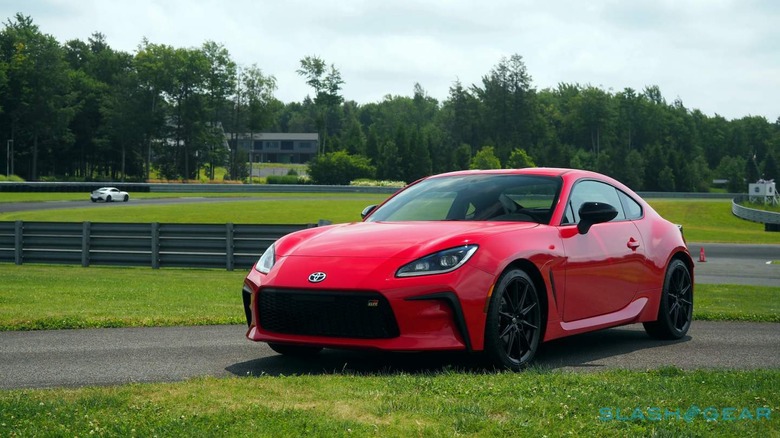
The automatic also packs six gears, and now has extra clutch discs and a new torque converter. Dynamic rev management is carried over, and you get paddle shifters as standard now too. It definitely makes the GR 86 easier to drive, though you pay a penalty in overall performance with it. Top speed with the auto is 134 mph and it'll do 0-60 mph in 6.6 seconds, versus the 140 mph and 6.1 seconds of the manual.
Meanwhile, there's a new rebound spring added to the front socks, new aluminum engine mount brackets, changes to the rear subframe, and more rigid steering with a smaller, lighter, and more responsive electric assistance system. The body is stiffer, and thanks to things like aluminum for the roof, front fenders, and hood, Toyota has managed to drop the center of gravity. Only by 1.6 mm, sure, which means the current state of digestion of your lunch probably has more of an impact on the GR 86's overall balance, but it's the thought that counts.
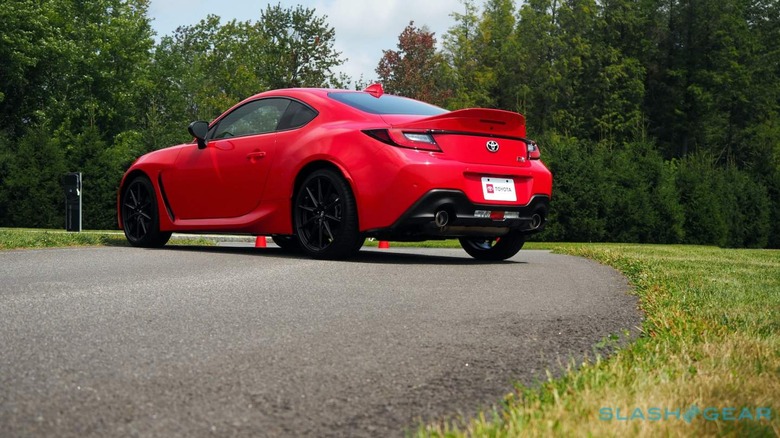
From the outside, some of the 86's serpentine styling has been made a little chunkier. There are hints of F-TYPE in the headlamps, while the rear reminds me of Acura's NSX. The ducktail rear spoiler, standard on the GR 86 Premium trim, looks a little silly but Toyota insists it serves a legitimate purpose; so, too, do the vents behind the front wheels, and indeed the rear wheel arch fins.
The 2022 GR 86 Premium also gets 18-inch wheels and adaptive front headlamps, while the base GR 86 has 17-inch wheels and regular LED lamps. Interestingly, Toyota has opted for two different tire choices. The 17-inch wheels get Michelin Primacy HP rubber, while the 18-inchers switch to Michelin Pilot Sport 4. The latter promise more grip, but the former might be your choice, the automaker says, if you like to go sideways more often. No judgement either way.
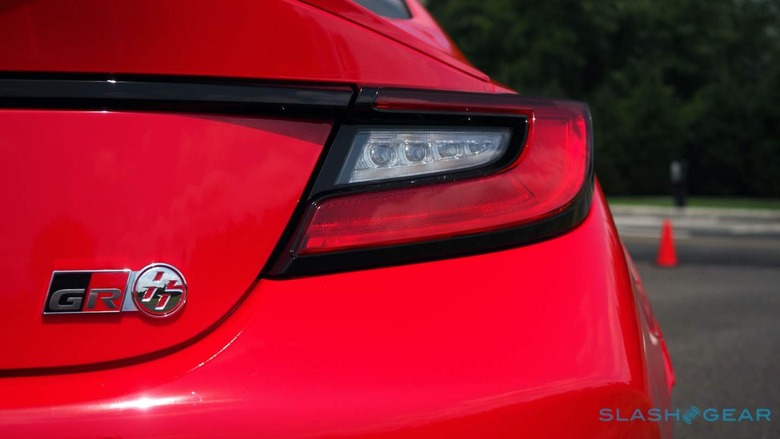
Out on the track, both versions have that same balance of grin-provoking playfulness and manageable power. 228 horsepower is hardly excessive, but when you weigh under 2,900 pounds in your most hefty configuration it's a different story.
The stick shift is a lovely thing, firm and notchy. I didn't have Mazda's MX-5 Miata on-hand for a side by side comparison, but I suspect either will please those not yet willing to give up on changing gears themselves. The 7,500 rpm redline means 2nd and 3rd are you friends, and Toyota's handiwork refining the snick between the two – combined with a neatly weighted clutch – quickly makes that transition second-nature.
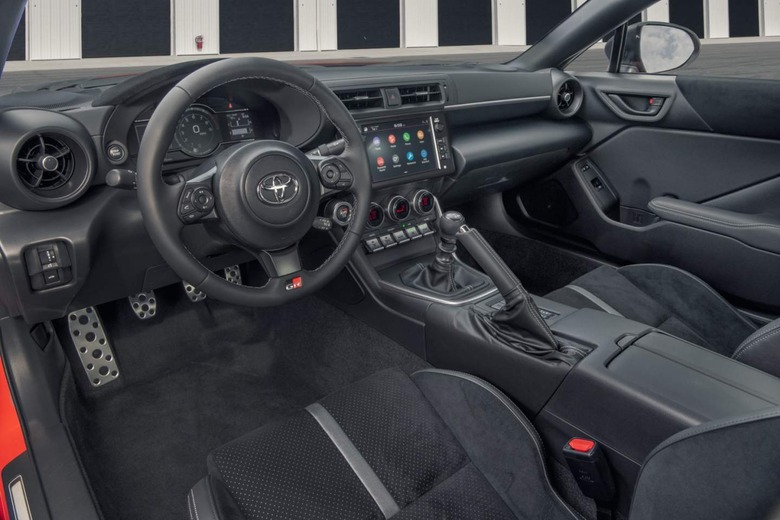
It's not to say that the automatic is bad, it's just always going to play second fiddle in a car like this. You get the best results when you weigh in and clack the paddles yourself; left to its own devices, the GR 86 isn't quite as eager to downshift as you might want.
As for slowing, there are now 11.6-inch ventilated front rotors and 11.4-inch ventilated rears. Toyota has a new brake pad composition, too. I can't say I noticed any fade, even after the GR 86 had been out on the track for some time.
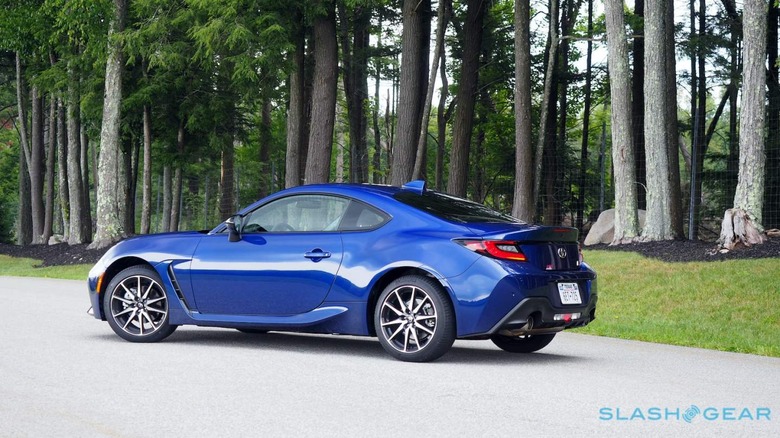
Back to back with the old 86, and the GR 86 demonstrates what a difference a few extra horses can achieve. You pull out of the corners faster; get back up to speed on the straights more rapidly. It's not exactly a night-and-day change, but it's enough to know that the newer, more potent car is the one you want. The biggest difference is where peak torque arrives: 3,700 rpm with the new 2.4-liter, long before the 6,400 rpm of the old engine.
That pays dividends out on the street, too. Public roads are obviously not the place for sideways action and tail-wagging exuberance, but the point-and-squirt eagerness of the new GR 86 makes for ample entertainment when you stumble across some tight twists. Like a Miata, there's a very real sense of appropriate power, rather than that frustration of having a high-potency sports car that you can only ever push to 4 or 5 out of 10 before the legal limits weigh in and spoil the game.
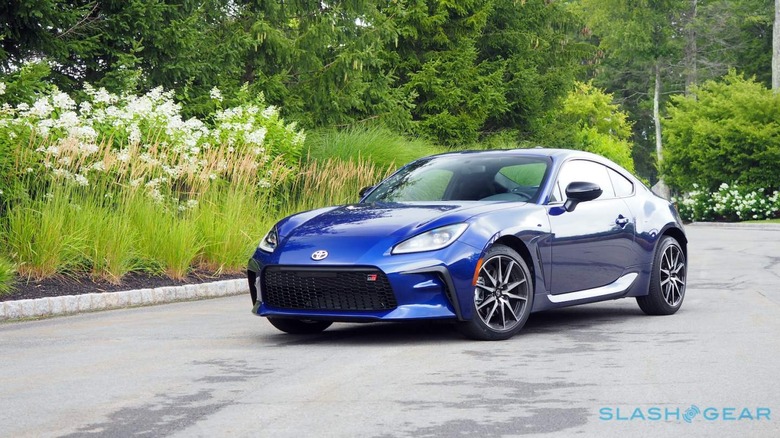
The GR 86 is certainly fast enough to help you flambé your license, but you can be having fun long before that point arrives. Equally important, it feels a little more refined than the old 86. Toyota tells me it didn't specifically set out to temper the ride for everyday use – in fact, its 2022 Subaru BRZ sibling is meant to be the slightly more cosseting version – but those same chassis and suspension enhancements that lend compliance on the track help avoid some of the bone-rattle that left the old car a little frustrating to live with once you were anywhere beyond your 30th birthday.
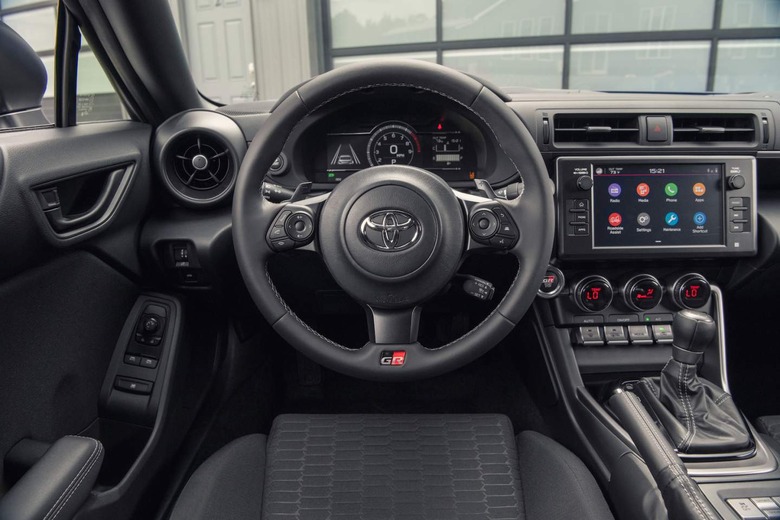
Other cabin enhancements help there. The dashboard is reminiscent of before, but looks and feels more premium. There's now a 7-inch digital instrumentation screen with different layouts based on drive mode, and a new upshift indicator. A driver knee airbag has been added, taking the total count to 7, and the automatic GR 86 gets Toyota's Active Safety Suite with things like pre-collision braking, adaptive cruise control, and lane departure warnings. Regardless of transmission, the GR 86 Premium has blind-spot warnings and rear cross traffic alerts.
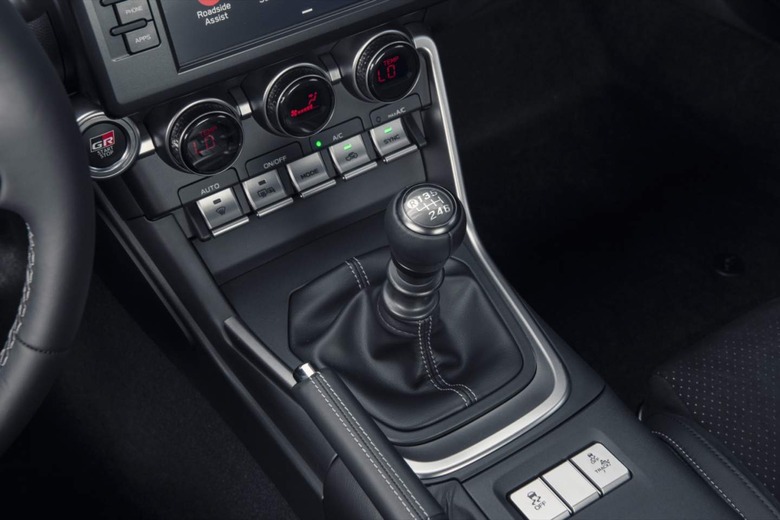
Dual-zone automatic climate control is standard, as is an 8-inch touchscreen, wired Apple CarPlay and Android Auto, sports seats, push-button start, and a leather-wrapped steering wheel and shift knob. Premium trim cars get more speakers, heated seats, fancier seat and door trim, and aluminum pedals. Your fingers still won't struggle to find some hard plastics, it's true, but overall it's more cohesive and feels better than in the old car.
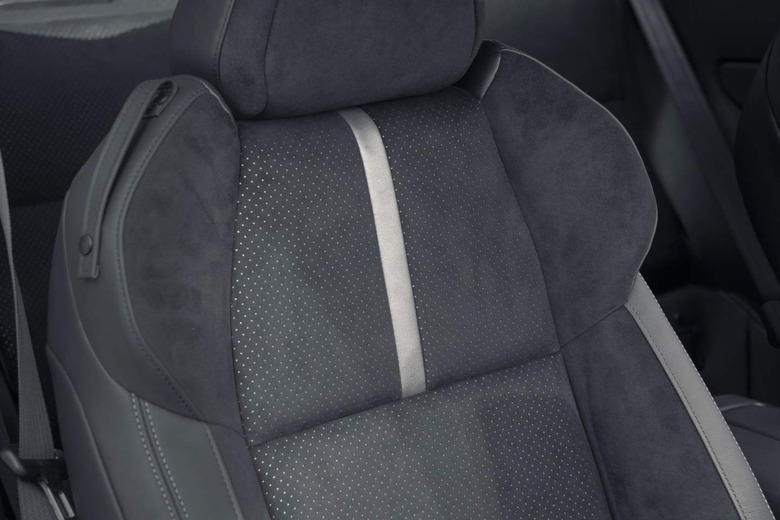
As with that old car, the GR 86 is officially a 2+2 seater, and as before the rear seats are really only fit for small children and large purses. Better still, drop the backrest down and extend the diminutive 6.26 cu-ft trunk. You'll hear the optional, removable 200 watt 10-inch subwoofer better that way, too.
2022 Toyota GR 86 Verdict
Like with the Miata, there's a feeling that driving enthusiasts should give a silent prayer of thanks that cars such as the GR 86 are still being made. Sitting in the low-slung coupe in traffic, your eye-line somewhere vaguely at door level of the huge SUVs and trucks around you, the titchy Toyota feels otherworldly.
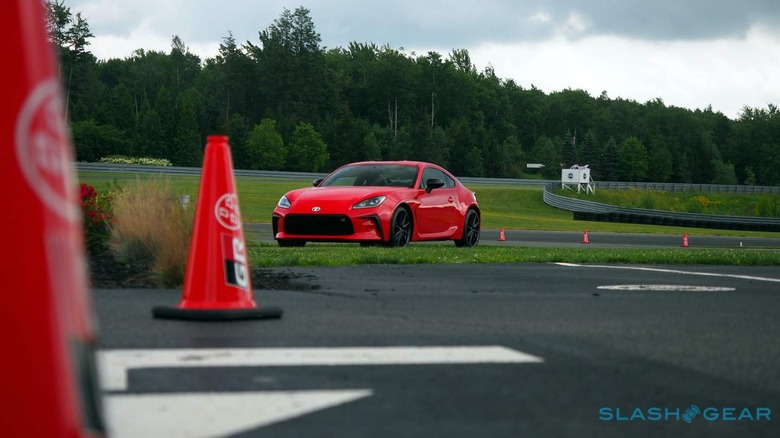
The fear was that, with 86 sales dwindling and the general appetite for small, straightforward coupes arguably waning, Toyota might decide to simply throw the towel in. You could hardly blame them for it. Instead, they took what was magical about that car and made it even more engaging, easier to live with day to day, and more fun whether you have a track or just some spooling backroads. The 2022 GR 86 isn't really practical or sensible, but those shortcomings don't leave the smile it puts on your face any smaller.
